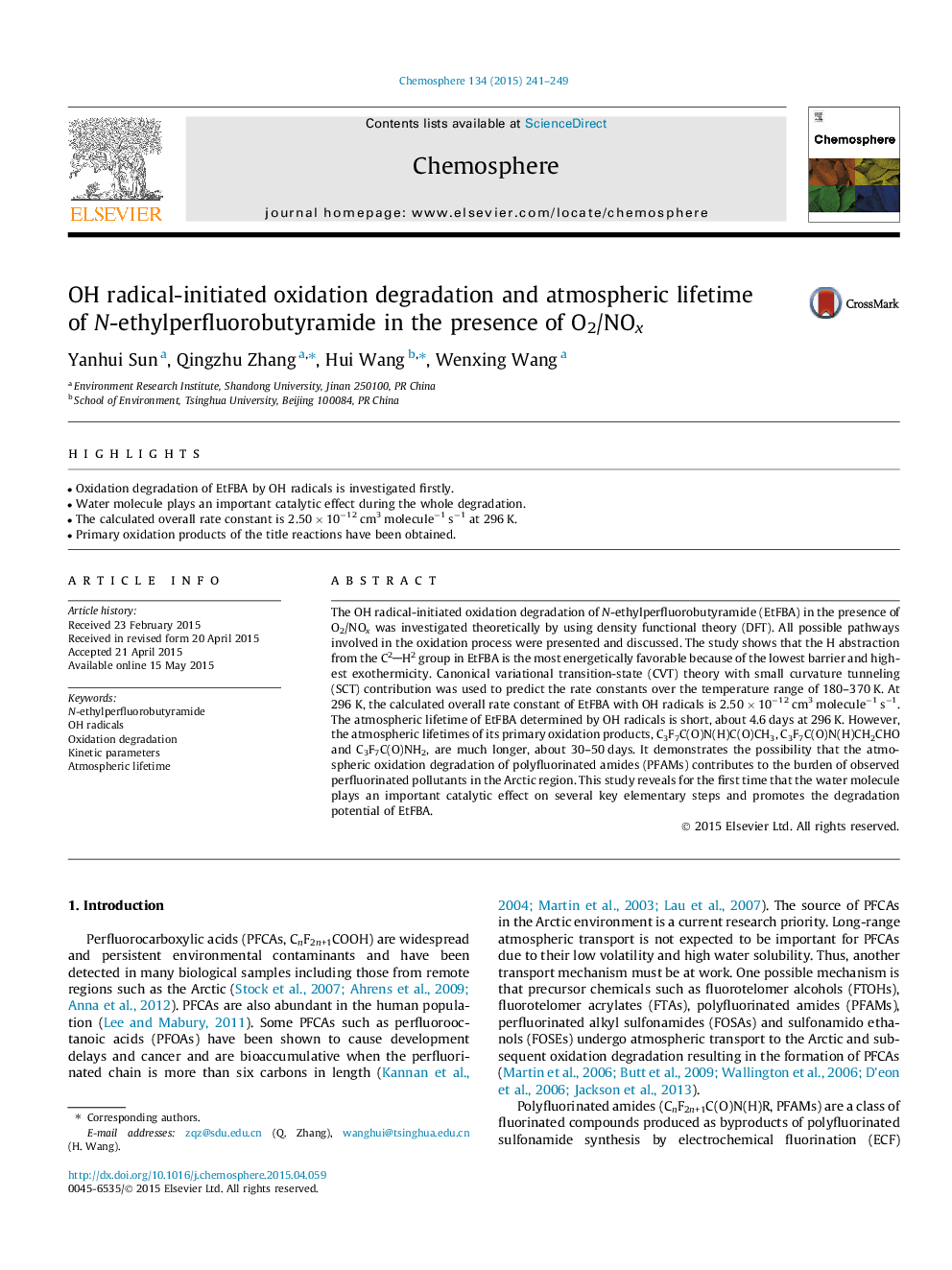| Article ID | Journal | Published Year | Pages | File Type |
|---|---|---|---|---|
| 6307664 | Chemosphere | 2015 | 9 Pages |
â¢Oxidation degradation of EtFBA by OH radicals is investigated firstly.â¢Water molecule plays an important catalytic effect during the whole degradation.â¢The calculated overall rate constant is 2.50 Ã 10â12 cm3 moleculeâ1 sâ1 at 296 K.â¢Primary oxidation products of the title reactions have been obtained.
The OH radical-initiated oxidation degradation of N-ethylperfluorobutyramide (EtFBA) in the presence of O2/NOx was investigated theoretically by using density functional theory (DFT). All possible pathways involved in the oxidation process were presented and discussed. The study shows that the H abstraction from the C2H2 group in EtFBA is the most energetically favorable because of the lowest barrier and highest exothermicity. Canonical variational transition-state (CVT) theory with small curvature tunneling (SCT) contribution was used to predict the rate constants over the temperature range of 180-370Â K. At 296Â K, the calculated overall rate constant of EtFBA with OH radicals is 2.50Â ÃÂ 10â12Â cm3Â moleculeâ1Â sâ1. The atmospheric lifetime of EtFBA determined by OH radicals is short, about 4.6Â days at 296Â K. However, the atmospheric lifetimes of its primary oxidation products, C3F7C(O)N(H)C(O)CH3, C3F7C(O)N(H)CH2CHO and C3F7C(O)NH2, are much longer, about 30-50Â days. It demonstrates the possibility that the atmospheric oxidation degradation of polyfluorinated amides (PFAMs) contributes to the burden of observed perfluorinated pollutants in the Arctic region. This study reveals for the first time that the water molecule plays an important catalytic effect on several key elementary steps and promotes the degradation potential of EtFBA.
